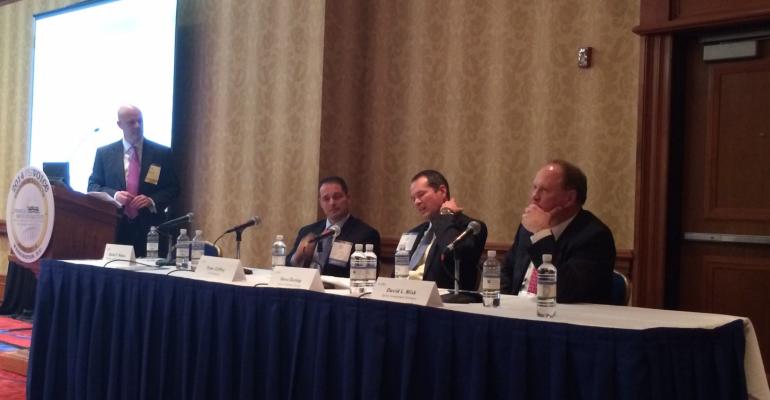In the independent broker/dealer space, margins are incredibly slim and getting slimmer, squeezed as they are by shrinking revenues and rising costs of technology and compliance. But a few IBD executives say they have found a surefire way to boost their profit margins—by expanding their fee-based business.
A firm can get 40 to 50 percent better margins on advisory business, said Steve Dunlap, executive vice president of wealth management at Cetera Financial Group, during a panel session at the Financial Services Institute’s OneVoice 2014 conference today. Converting more assets to advisory also increases the value of the advisor’s book of business.
Currently, only 23 percent of Cetera’s assets are in advisory accounts, Dunlap said. In fact, more than half of the firm’s 7,000 FAs don’t have a single advisory account.
“That is an extraordinary opportunity for organic growth,” he said.
The firm has been segmenting its advisor force, targeting advisors with at least $150,000 in annual revenue, and consulting them on how to move to a fee-based model. The firm has also been targeting its recruiting efforts on advisors who are already committed to advisory, or who are looking to shift more to fees.
David Blisk, CEO of Spire Investment Partners, a small b/d, said advisory business has been essential to improving his firm’s margins. He used the example of one advisor team that had $180,000 in production when they joined the firm. The team, committed to the fee model, learned how to monetize their business, and they’re now doing $800,000 in production, he said.
Not all advisors are like that, however. Pricing can often be an issue when you’re targeting these types of advisors—specifically when it comes to getting advisors to increase their fees. LPL Financial, for example, looks at how other FAs across the industry price their services and shows that to their advisors, said Peter Coffey, senior vice president of advisor platform strategy at LPL.
Larger accounts do get priced down because of the larger pool of assets, but Dunlap and Blisk said that prices are actually going up. From an anecdotal perspective, Blisk said prices have gone up 10 to 25 basis points. Many advisors are communicating what value they can add to the client experience. As older practices start transitioning to younger advisors, that’s also an opportunity to reprice those accounts, Blisk added.




